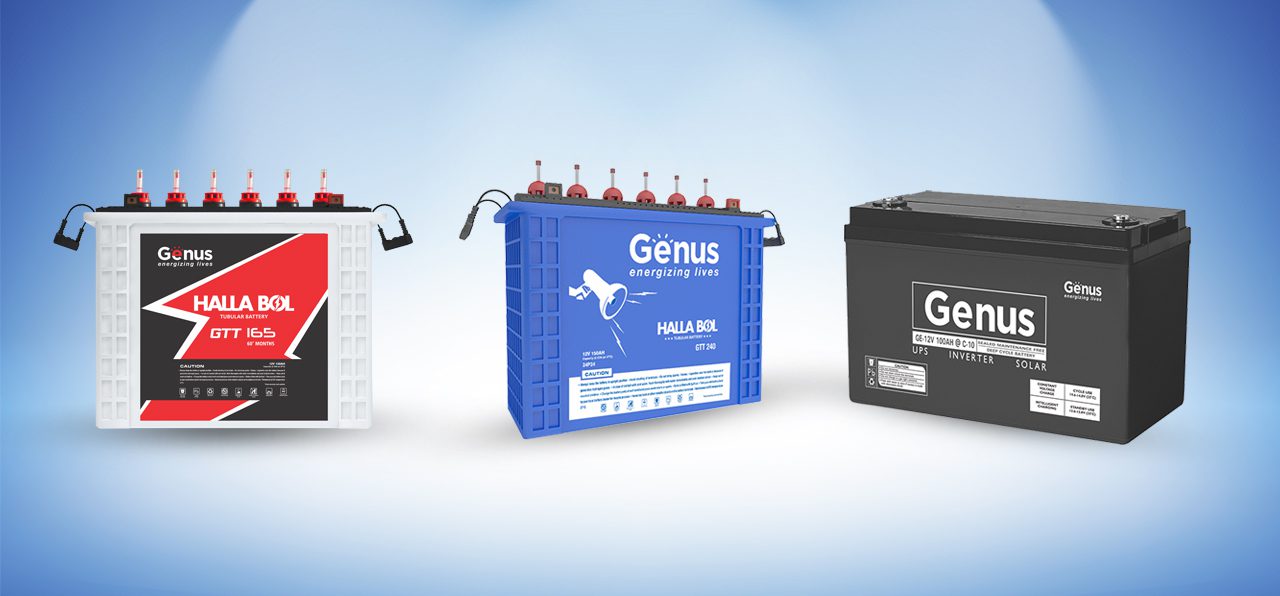
An inverter is essential for running modern life smoothly, especially when the fear of power cuts looms large. Depending on the kind of inverter you choose, it can run a variety of electrical fixtures and appliances, ranging from lights and fans to kitchen appliances, computers and more. And the battery is the reason why your inverter functions the way you need it to. So, are you wondering which the best inverter battery for home use is? Then keep in mind the following factors and find out about the different battery types before making a choice.
Vital factors that determine battery needs
High performance and the energy-efficient battery can help your inverter last long. So, first, decide what all appliances you wish to run with the battery and for how many hours. Batteries come in various capacities and have different voltages and backup hours. Also, their prices vary greatly. So, choose based on your need and budget.
In case you wish to make an environment-friendly move, then a solar inverter and battery might be the best option. So, decide if you wish to invest in such a solution, as it might be a little expensive in the short run, but will pay off significantly in the long run.
Types of inverter batteries to pick from
Tubular batteries – If you choose a tubular battery from a reputed provider, you can expect them to provide stable, consistent and adequate power during long and frequent power outages too. These will require low maintenance due to high acid volumes and will suit both grid and solar-based setups.
Premium quality tubular batteries come with long life, function at high temperatures, and are resistant to corrosion as well. They feature plates that don’t get overheated and the batteries get charges quickly. You can also expect efficient deep discharge recovery and easy to read electrolyte level indicators.
VRLA or SMF batteries – Valve Regulated Lead Acid or Sealed Maintenance Free batteries are usually heavy-duty and can be used for various household applications. You won’t need to top them up with water periodically, which lessens the hassle associated. The batteries don’t cause spillage as they are perfectly sealed and don’t produce any noxious fumes. You should also check if they have a C10 rating and if they can last in deep cycling applications during prolonged power cuts.
A good VRLA battery will be free from orientation constraints, have low internal resistance and will be of international size. It will be factory charged so that you can use it right after installation. The battery will also be recyclable and hence safe for the environment.
Solar batteries – If you have a solar inverter, you will naturally need a solar battery with a C 10 rating. Such a battery will store the excess energy produced by solar panels, which can be used later on after dark or when there is a power cut. A premium solar battery can also work without a solar setup, so it will be a good buy if you are planning to go solar in the future.
High acid volumes ensure that these batteries need minimal maintenance. As they are composed of selenium low antimonial alloy, they operate efficiently at high temperatures too. Long battery life, fast charging ability, deep discharge recovery, anti-corrosive nature and resistance to overheating are some other advantages you can expect. These batteries can handle frequent and long power cuts and have electrolyte level indicators which are easy to read.
Way forward
All in all, choosing the best inverter battery for your home will depend on all the factors and battery types mentioned above. You need to do a bit of research, compare what leading brands are offering, weigh the pros and cons of different kinds of battery and then take your pick.
